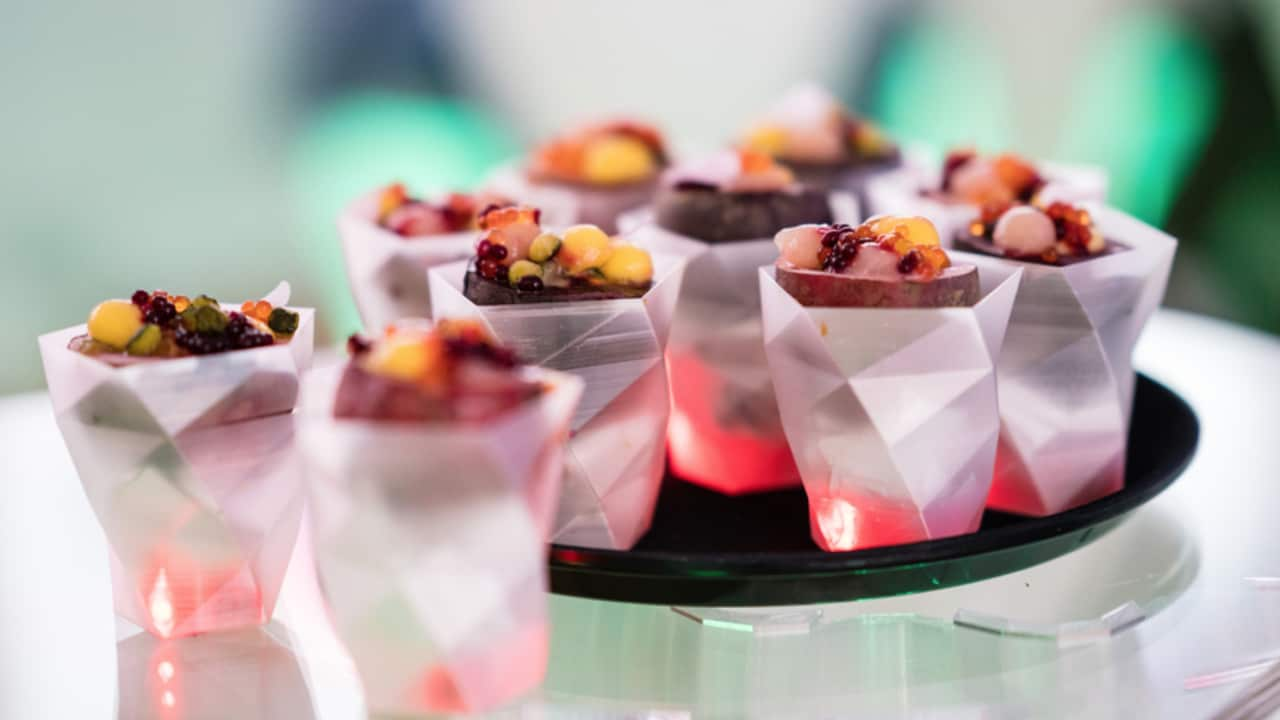It’s fine dining, but not as you know it.
is the world’s first restaurant serving 3D-printed food with 3D-printed utensils at 3D printed tables. If you take a seat to enjoy the cuisine, you’ll be sitting on 3D-printed chairs.
The company, which officially opened in London in July 2016, has been popping up in locations all over the world. It prides itself on being a place where fine food intersects with science, technology and futurism - and where more ‘oohs and ahhs’ are heard than anywhere else.
“At Food Ink, we believe that technology needs to serve a purpose and we are using it to add magic to the magic,” the Food Ink website reads.
We are putting to work the most innovative technologies, like 3D-printing and virtual reality, in order to present the most exquisite interactive edible experience.
“Simply put, we are putting to work the most innovative technologies, like 3D-printing and virtual reality, in order to present the most exquisite interactive edible experience. Our energy is dedicated to making every moment an enchantment.”
If your first question is along the lines of, “but is it actually FOOD?”, rest assured – everything on the menu at Food Ink is edible, despite being made by a machine and not a human. In a process that looks similar to piping icing out of pastry bags, ingredients are pureed, packed into 3D moulds (which are made digitally), and then ‘printed’ with a Dutch-made 3D printing machine called .
The moulds are guided with the robotic ‘arm’ of the printer to create dishes at a level of precision rarely achieved by a human chef.
CEO and founder Antony Dobrzensky leads a team of “architects, artists, chefs, designers, engineers, futurists, industrials, inventors and technologists,” including culinary advisors Mateu Blanch and Joel Castanye (both of Spanish molecular gastronomy restaurant La Boscana) and design advisor Arthur Mamou-Mani.
Together, they’re creating dishes like olive caviar served on a Petri dish, ‘fish and chips’ (actually made with toasted seaweed and fish mayonnaise, and crafted into a computer-chip shape), and chocolate all printed live in front of an audience.
In an interview with Munchies, Dobrzensky admits knowing foodies would be skeptical, but believes he’s well equipped to change their minds.
“I only wanted to do this project if the food could be outstanding, and I don’t want to substitute chefs,” he says.
“I wanted to work with them to see how we could work with the technology to bring out the best in each other.”
Another burning question: Aside from the obvious novelty factor, is there any real value in printing out food? 3D printers offer an efficient alternative to manpower, and could potentially contribute to a sustainable to problems caused my population growth.
That said, 3D printed food is (for lack of a better word), weird.
Is there any real value in printing out food?
Making and serving food has been intrinsically linked to the human experience for millennia. It’s difficult to predict what consequences this new technique could have, but it could very well be the premise of a futuristic sci-fi film.
Food Ink is yet to open in Australia.
Food Ink has popped up in London, Berlin, New York, Amsterdam, Dubai, Seoul, Rome, Toronoto, Las Vegas, Tel Aviv, Barcelona, Paris, Sao Paulo, Singapore. We’re keeping up with them on , and for news of an Australian leg.





